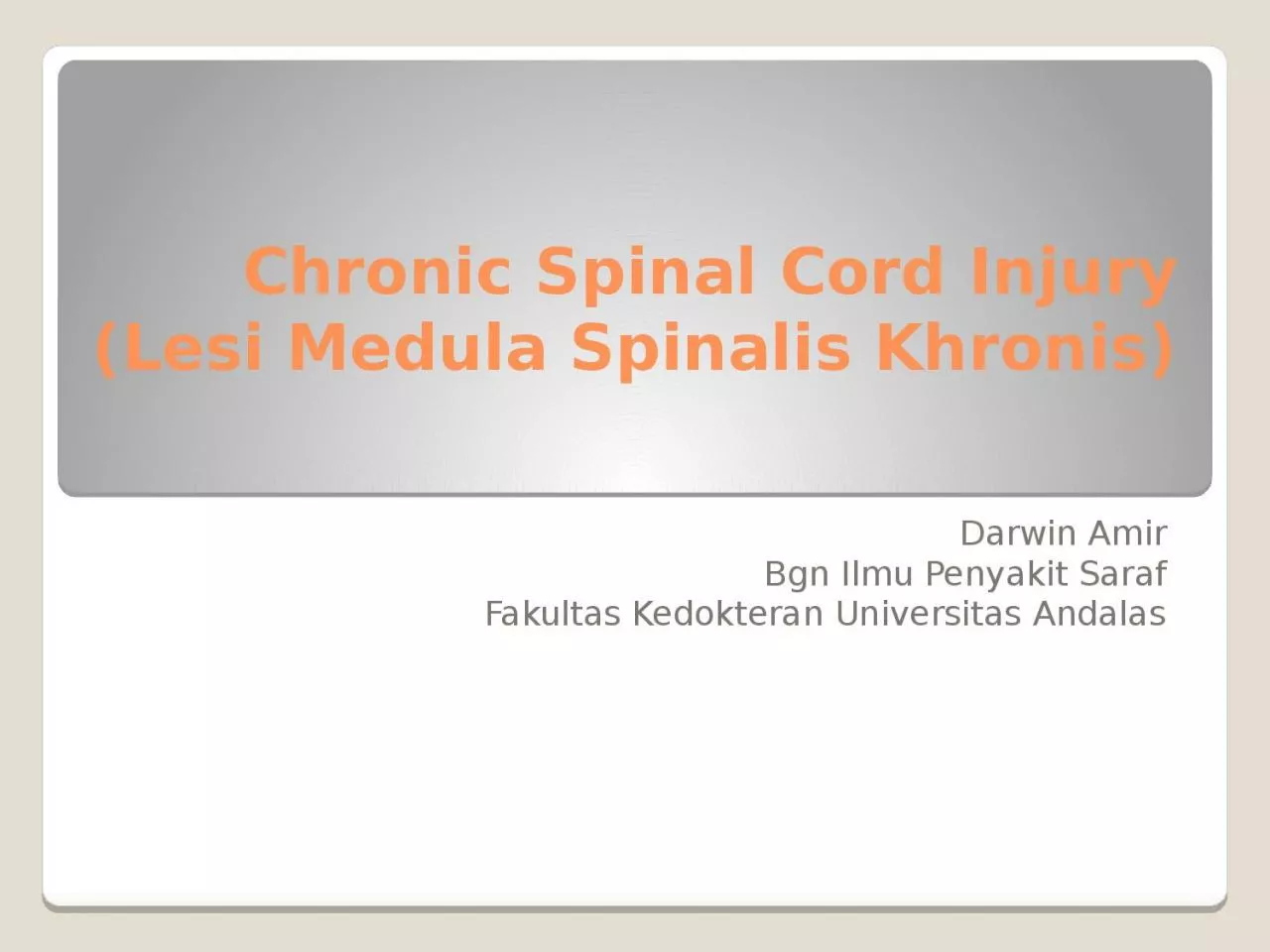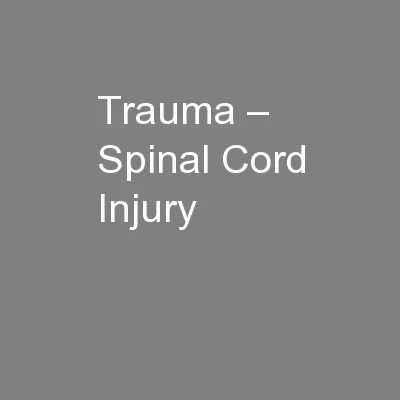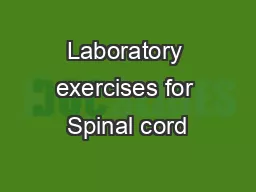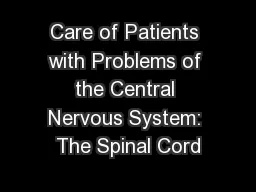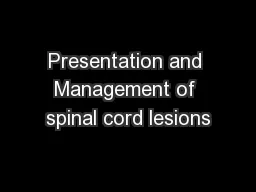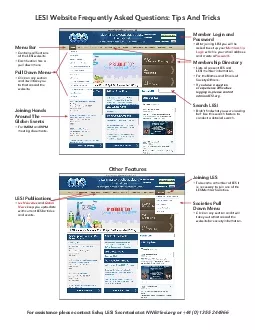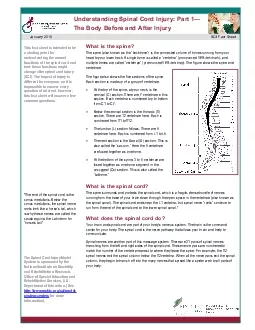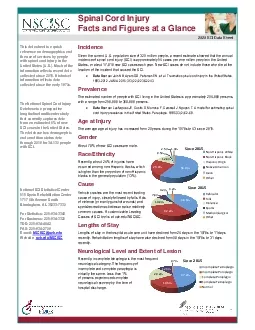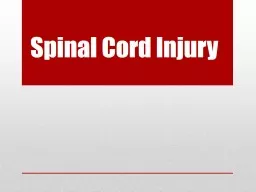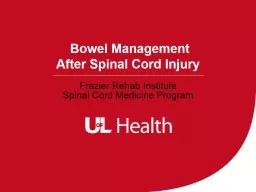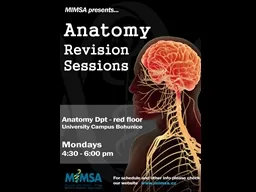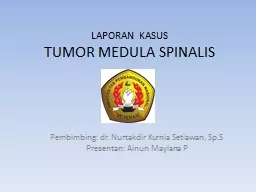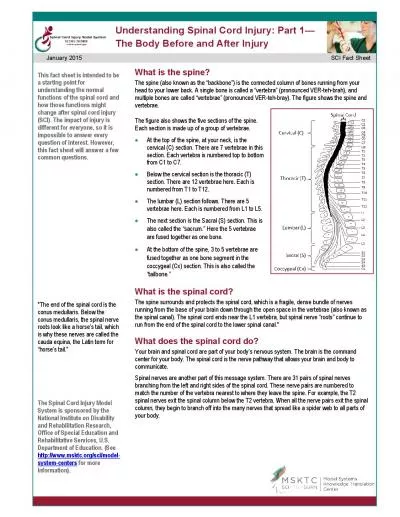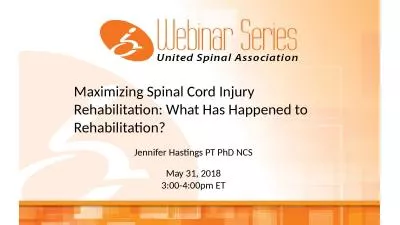PPT-Chronic Spinal Cord Injury (Lesi Medula Spinalis Khronis)
Author : missingsole | Published Date : 2020-08-28
Lesi Medula Spinalis Khronis Darwin Amir Bgn Ilmu Penyakit Saraf Fakultas Kedokteran Universitas Andalas The Spinal Cord Cervical spinal erves Thoracic spinal nerves
Presentation Embed Code
Download Presentation
Download Presentation The PPT/PDF document "Chronic Spinal Cord Injury (Lesi Medula ..." is the property of its rightful owner. Permission is granted to download and print the materials on this website for personal, non-commercial use only, and to display it on your personal computer provided you do not modify the materials and that you retain all copyright notices contained in the materials. By downloading content from our website, you accept the terms of this agreement.
Chronic Spinal Cord Injury (Lesi Medula Spinalis Khronis): Transcript
Download Rules Of Document
"Chronic Spinal Cord Injury (Lesi Medula Spinalis Khronis)"The content belongs to its owner. You may download and print it for personal use, without modification, and keep all copyright notices. By downloading, you agree to these terms.
Related Documents

